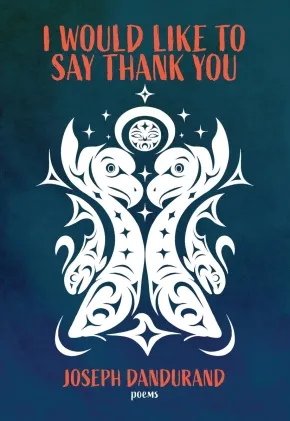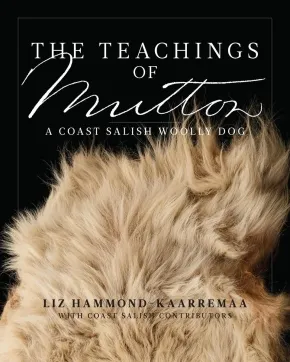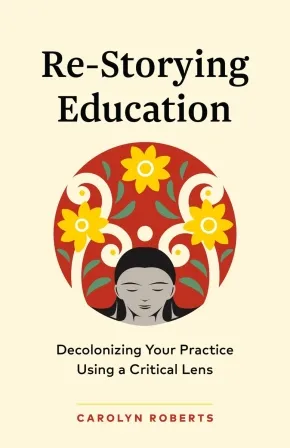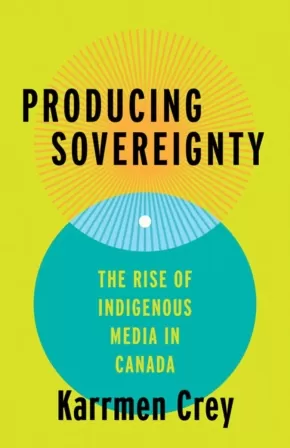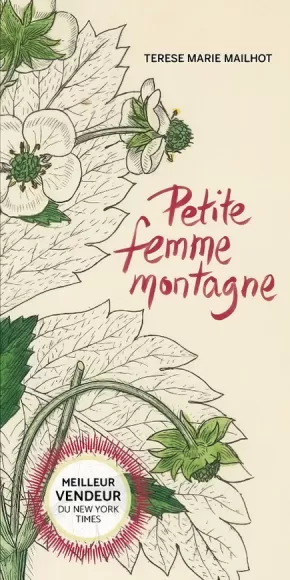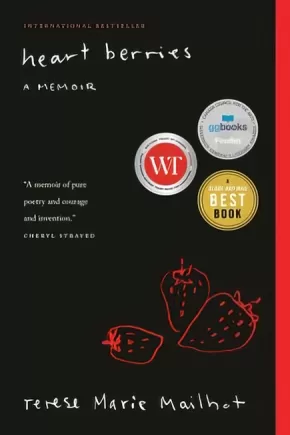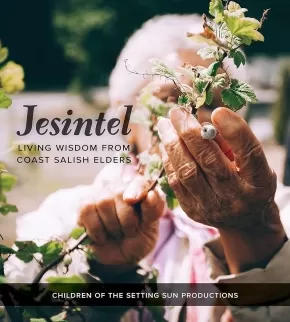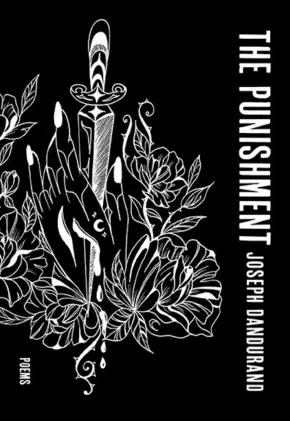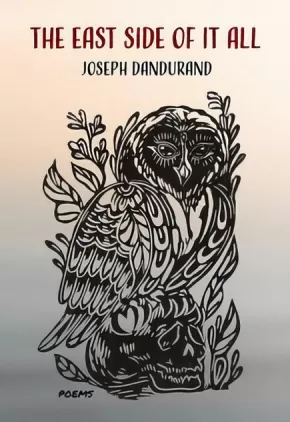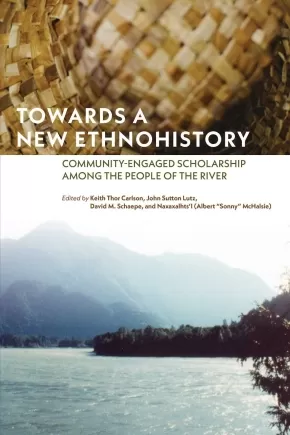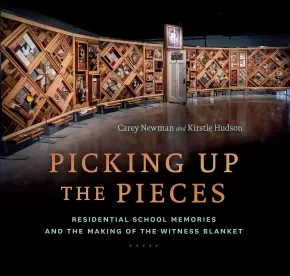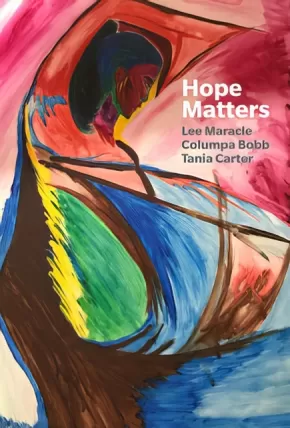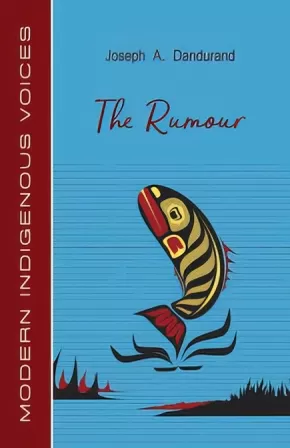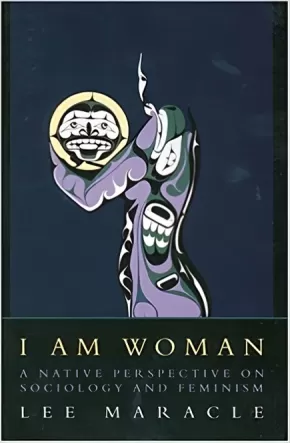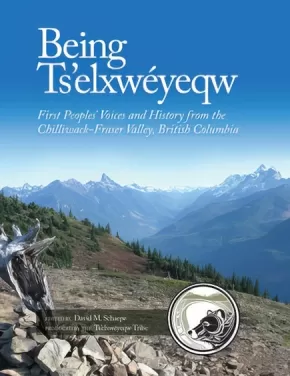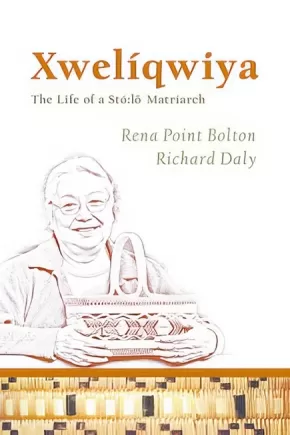Stó:lõ
Synopsis:
New poems from award-winning storyteller and poet Joseph Dandurand.
Prolific Kwantlen writer Joseph Dandurand offers his latest poetry collection, following The Punishment and The East Side of It All, which was shortlisted for the 2021 Griffin Poetry Prize.
Building on his legacy as a skilled storyteller, Dandurand continues to write about trauma, love, grief and forgiveness. These poems are about the streets, the East Side, self-pity, spirits and Dandurand’s people, the Kwantlen. As the jury of the 2022 Latner Writers’ Trust Award wrote, “his quotidian reflections read like parables, with startling economy.” After putting this collection down, don’t be surprised to find yourself saying “thank you,” too.
Additional Information
102 pages | 5.50" x 8.00" | Paperback
Synopsis:
The pelt of a dog named “Mutton” languished in a drawer at the Smithsonian for 150 years until it was discovered, almost accidentally, by an amateur archivist. This book tells Mutton's story and explores what it can teach us about Coast Salish Woolly Dogs and their cultural significance.
Until now, there has been very little written about the enigmatic Coast Salish Woolly Dog, or sqʷəmey̓ in the Hul'q'umi'num language. According to Indigenous Oral Histories of the Pacific Northwest, this small dog was bred for thousands of years for its woolly fibres, which were woven into traditional blankets, robes and regalia. Although the dogs were carefully protected by Coast Salish peoples, by the 1900s, the Woolly Dog had become so rare it is now considered extinct.
Co-authored with weavers, Knowledge Keepers, and Elders, The Teachings of Mutton interweaves perspectives from Musqueam, Squamish, Stó:lō, Suquamish, Cowichan, Katzie, Snuneymuxw, and Skokomish cultures with narratives of science, post-contact history, and the lasting and devastating impacts of colonization. Binding it all together is Mutton's story—a tale of research, reawakening, and resurgence.
Reviews
“What a compelling story, reflecting a way of life, practical knowledge, artistry and change in the Pacific Northwest! Mutton, the domesticated woolly dog, represents so much more than a museum collection or a source of weaving material. Generations of breeding, learning and sharing, caring and trading are mirrored in the discovery of his pelt in a drawer at the Smithsonian. Liz Hammond-Kaarremaa and her respected Salishan co-authors and Knowledge Keepers have brought Mutton into the present, and in doing so, have given us a new and unique perspective on the complex history of this region and on the meaning of Truth and Reconciliation. The book is clearly and thoughtfully written, and supplemented with excellent illustrations. It is a ‘must read’ for anyone wishing to know more about weaving arts, dog breeds, Indigenous cultures and/or history in northwestern North America.” — Nancy J. Turner, Distinguished Professor Emerita, University of Victoria
“Conscientious and accessible, The Teachings of Mutton weaves a charming and informative history, walking through the discovery of his pelt in a museum drawer to the modern science that reveals the shape of this dog’s life. Highlighting and correcting generations of non-Indigenous misinterpretation, the intertwined histories provided by Salish knowledge keepers reveal the nuanced Indigenous sciences of dog husbandry, spinning, weaving, and the cultural significance of Woolly Dogs while telling a lively story.” — Kathryn Bunn-Marcuse, PhD, curator of Northwest Native art and director of the Bill Holm Center for
Additional Information
264 pages | 8.00" x 10.00"
Synopsis:
An invaluable resource for educators looking to actively participate in reshaping education to include historically silenced voices in the classroom.
Re-Storying Education is a process of dismantling old narratives taught in education and rebuilding new narratives that include all the voices that have created this place known as Canada today. This vital and timely book outlines how colonialism has shaped both the country and the public school system. Re-Storying Education uses an Indigenous lens, offering ways to put Indigenous education, history, and pedagogy into practice. It invites readers into an open dialogue in the pursuit of a more inclusive and just educational landscape.
Drawing from her own experiences as an Indigenous student, educator, and administrator, in public and band-operated school systems, Indigenous academic Carolyn Roberts offers a deep understanding of how to support educators with Indigenous education and to create a nurturing and inclusive environment for all students. Re-Storying Education brings wider perspectives, connections to the land and the people of this land, and a deeper understanding of how relationships to these can change the educational experience for all students.
Re-Storying Education contains valuable lesson and assessment ideas, fostering the development of a critical lens in education. Roberts offers questions for self-reflection, suggestions for professional action, recommended resources for further learning, personal stories and anecdotes, insights from her own decolonizing teaching practices, and playlists that reflect the spirit of the work and that uplift Indigenous voices.
This is a must-have resource for all educators and change-makers in education today!
Reviews
"A gentle yet thorough overview and introduction, Re-Storying Education is packed with history and context to help educators decolonize their practices. Carolyn Roberts has written an excellent resource for navigating often-fraught waters, turning potential struggle into a hopeful journey of discovery and reconciliation." — Eden Robinson, bestselling author of the Trickster trilogy
"Woven in these pages is a masterful contribution to the field of education and to those who work in educating hearts, minds and spirits. I found myself lit up, excited, eager to turn each page and also inspired to slow down, reflect and let all the beauty in the pages find their rightful place in my own learning. Carolyn invites us to go on a journey with her, to be in relationship with her as we learn, unlearn, relearn and ignite our excitement in the joy of education. Re-Storying Education is full of knowledge, wisdom, truths and stories and will influence education for generations to come." — Monique Gray Smith, bestselling author of I Hope
Additional Information
224 pages | 5.50" x 8.50" | Paperback
Synopsis:
Exploring how Indigenous media has flourished across Canada from the 1990s to the present
In the early 1990s, Indigenous media experienced a boom across Canada, resulting in a vast landscape of film, TV, and digital media. Coinciding with a resurgence of Indigenous political activism, Indigenous media highlighted issues around sovereignty and Indigenous rights to broader audiences in Canada. In Producing Sovereignty, Karrmen Crey considers the conditions—social movements, state policy, and evolutions in technology—that enabled this proliferation.
Exploring the wide field of media culture institutions, Crey pays particular attention to those that Indigenous media makers engaged during this cultural moment, including state film agencies, arts organizations, provincial broadcasters, and more. Producing Sovereignty ranges from the formation of the Aboriginal Film and Video Art Alliance in the early 1990s and its partnership with the Banff Centre for the Arts to the Canadian Broadcasting Corporation’s 2016 production of Highway of Tears—an immersive 360-degree short film directed by Anishinaabe filmmaker Lisa Jackson—highlighting works by Indigenous creators along the way and situating Indigenous media within contexts that pay close attention to the role of media-producing institutions.
Importantly, Crey focuses on institutions with limited scholarly attention, shifting beyond the work of the National Film Board of Canada to explore lesser-known institutions such as educational broadcasters and independent production companies that create programming for the Aboriginal Peoples Television Network. Through its refusal to treat Indigenous media simply as a set of cultural aesthetics, Producing Sovereignty offers a revealing media history of this cultural moment.
Reviews
"Producing Sovereignty is a must-read for those interested in the theoretical fundamentals of Indigenous media studies. By unearthing and revealing the subjugated histories and materiality of Indigenous artists and filmmakers, Karrmen Crey provides a crucial lens into the co-constitutive production of Indigenous aesthetics as an outcome of institutional contestations."—Brendan Hokowhitu, University of Queensland
"One of the most engaging and sophisticated books in the field, Producing Sovereignty uses highly immersive case studies to locate Indigenous media within wider social movements and cultural developments in North America. Karrmen Crey speaks to the decolonizing force of Indigenous media—not only as expressions of Indigenous cultural sovereignty but as destabilizing forces within contemporary settler societies."—Marian Bredin, coeditor of Canadian Television: Text and Context
Additional Information
224 pages | 5.50" x 8.50" | 25 black and white illustrations | Paperback
Synopsis:
Petite femme montagne est un cri du coeur qui prend le lecteur à témoin et l'oblige à examiner sa propre vie. C'est livre vérité, un livre boussole qui explique comment survivre aux relations mère-fille, à la maternité, au désir, à la trahison, aux amours déçus, à la dépendance, à l'abus et à l'injustice. Terese Marie Mailhot illumine avec finesse son enfance dans une maison infestée de coccinelles sur la réserve de Seabird Island. Son père, un artiste qu'a rencontré sa mère alors qu'il était en prison est décédé dans une chambre de motel après une altercation avec un ami. Elle montre comment pour quelqu'un qui a vécu la faim, l'abus et les familles déchirées le simple confort de la vie domestique peut ressembler au paradis. Petite femme montagne est un livre nécessaire.
Educator Information
This book is available in English: Heart Berries: A Memoir
Additional Information
204 Pages
Synopsis:
Guileless and refreshingly honest, Terese Mailhot's debut memoir chronicles her struggle to balance the beauty of her Native heritage with the often desperate and chaotic reality of life on the reservation.
Heart Berries is a powerful, poetic memoir of a woman's coming of age on the Seabird Island Indian Reservation in British Columbia. Having survived a profoundly dysfunctional upbringing only to find herself hospitalized and facing a dual diagnosis of Post Traumatic Stress Disorder and Bipolar II, Terese Mailhot is given a notebook and begins to write her way out of trauma. The triumphant result is Heart Berries, a memorial for Mailhot's mother, a social worker and activist who had a thing for prisoners; a story of reconciliation with her father--an abusive drunk and a brilliant artist--who was murdered under mysterious circumstances; and an elegy on how difficult it is to love someone while dragging the long shadows of shame.
Mailhot "trusts the reader to understand that memory isn't exact, but melded to imagination, pain and what we can bring ourselves to accept." Her unique and at times unsettling voice graphically illustrates her mental state. As she writes, she discovers her own true voice, seizes control of her story and, in so doing, reestablishes her connection to her family, to her people and to her place in the world.
Educator Information
This book is available in French: Petite Femme Montagne
Additional Information
144 pages | 5.00" x 7.50" | Paperback
Synopsis:
“We need to learn and grow together, and if we are able to do this, we will create harmony,” counsels Tom Sampson, an elder of Tsartlip First Nation in British Columbia.
Dynamic and diverse, Coast Salish culture is bound together by shared values and relations that generate a resilient worldview. Jesintel—"to learn and grow together"—characterizes the spirit of this book, which brings the cultural teachings of nineteen elders to new generations.
Featuring interviews that share powerful experiences and stories, Jesintel illuminates the importance of ethical reciprocal relationships and the interconnectedness of places, land, water, and the spirit within all things. Elders offer their perspectives on language revitalization, Coast Salish family values and naming practices, salmon, sovereignty, canoe racing, and storytelling. They also share traumatic memories, including of their boarding school experiences and the epidemics that ravished their communities. Jesintel highlights the importance of maintaining relations and traditions in the face of ongoing struggles. Collaboration is at the heart of this work and informs how the editors and community came together to honor the boundless relations of Coast Salish people and their territories.
Elders Interviewed:
Tom Sampson (Tsartlip First Nation)
Virginia Cross (Muckleshoot Tribe)
Ernestine Gensaw (Lummi Nation)
Steve and Gwen Point (Stó:lō Nation)
Gene and Wendy Harry (Malahat Nation)
Claude Wilbur (Swinomish Tribe)
Richard Solomon (Lummi Nation)
Elaine Grinell (Jamestown S’Klallam Tribe)
Arvid Charlie (Cowichan Nation)
Amy George (Tsleil-Waututh Nation)
Nancy Shippentower (Nisqually Tribe)
Nolan Charles (Musqueam Indian Band)
Andy de los Angeles (Snoqualmie Tribe)
Jewell James (Lummi Nation)
Kenny Moses Sr. Family (Tulalip Tribal Nation)
Ramona Morris (Lummi Nation)
Reviews
"A beautiful sharing of thriving Coast Salish communities. Indigenous elders, cultures, and languages have so much precious wisdom to share, and Jesintel celebrates these through storytelling and photos. It is a generous gift to anyone who wants to better understand the resilience of Indigenous communities."- Michelle M. Jacob (Yakama), author of The Auntie Way: Stories Celebrating Kindness, Fierceness, and Creativity
Educator Information
Nineteen elders from Coast Salish communities in the Pacific Northwest and British Columbia offer a portrait of their perspectives on language, revitalization, and Coast Salish family values. Topics include naming practices, salmon, canoe journeys and storytelling.
Additional Information
224 pages | 9.00" x 10.00" | 144 colour illustrations | 1 map | Paperback
Synopsis:
the tales are of loss and forgiveness
and they fill the room
The Punishment is the latest addition to the oeuvre of prolific Kwantlen writer Joseph Dandurand, whose stunning previous collection, The East Side of It All, was shortlisted for the Griffin Poetry Prize.
In The Punishment, Joseph Dandurand's now-familiar storyteller's voice wrangles trauma, grief, forgiveness and love. His poems illustrate the poet's solitary existence. With scenes of residential school, the psych ward, the streets and the river, Dandurand reveals an arduous journey: one poet's need to both understand his life and find ways to escape it. Through poetry, he shares with us all his lovers. He shares the streets. He shares what he sees: the great eagles and small birds; his culture and teachings; the East Side; self-pity; the deception of love; the deception of hate; sasquatches; spirits; and his people, the Kwantlen.
At root, The Punishment is about survival. Dandurand's poems will show you disease. They'll show you cedar. They'll show you music. They'll show you shadows. They'll show you forgiveness, and they'll show you punishment.
Reviews
"Hands down, Joseph Dandurand is one of my all-time favourite writers ... Good Lord―what a voice!" — Richard Van Camp,
Additional Information
144 pages | 5.50" x 8.00" | Paperback
Synopsis:
The East Side of It All draws on Joseph Dandurand’s first-hand experiences of life as a drug user and single-room occupant in Vancouver’s Downtown Eastside, and of the ongoing process of healing through reconnection with family, the natural world and traditional Indigenous (Kwantlen) storytelling. His voice is lyrical yet intimate, obscured yet sitting with you at the kitchen table having a cigarette. The East Side of It All is the journey of a broken man who finally accepts his storytelling gift and shares with the world his misery, joy and laughter.
Additional Information
96 pages | 5.50" x 8.00"
Synopsis:
Towards a New Ethnohistory engages respectfully in cross-cultural dialogue and interdisciplinary methods to co-create with Indigenous people a new, decolonized ethnohistory. This new ethnohistory reflects Indigenous ways of knowing and is a direct response to critiques of scholars who have for too long foisted their own research agendas onto Indigenous communities. Community-engaged scholarship invites members of the Indigenous community themselves to identify the research questions, host the researchers while they conduct the research, and participate meaningfully in the analysis of the researchers’ findings.
The historical research topics chosen by the Stó:lō community leaders and knowledge keepers for the contributors to this collection range from the intimate and personal, to the broad and collective. But what principally distinguishes the analyses is the way settler colonialism is positioned as something that unfolds in sometimes unexpected ways within Stó:lō history, as opposed to the other way around.
This collection presents the best work to come out of the world’s only graduate-level humanities-based ethnohistory fieldschool. The blending of methodologies and approaches from the humanities and social sciences is a model of twenty-first century interdisciplinarity.
Reviews
“At a time when Indigenous sovereignty has come to the fore, this volume sets the ‘gold standard’ for ethical scholarship and provides a roadmap and manifesto for sensible and sensitive decolonization.”– Chris Friday, Professor of History, Western Washington University
“The strength of the collection is its appreciation for and attention to interpreting history with reference to Stó:lō interpretative frames.” – Tyler McCreary, BC Booklook
“In a time when many scholars are looking to decolonize their approaches to research—especially when working with Indigenous communities—this book stands as a clear exemplar of community-engaged research and demonstrates how it can be done well.”– Jennifer Megan Markides, University of Calgary, Qualitative Research in Education
“Exemplifies a new, transdisciplinary approach to ethnohistory, in which the researcher recognizes not only the legacy of settler colonialism in Canada, but also the subjectivity and relativity of their own views and western knowledge as a whole. This new ethnohistory aims to work with the community at all levels of research and form and sustain relationships that last long after fieldwork is conducted. Its hope is to produce scholarship that is cutting edge, complex, accessible and relevant to members of the community.”– Daniel Sims, NICHE
“Settler scholars concerned with disciplinary crises need look no further than this excellent anthology for models of respectful intercommunity engagement, radical methodology and pedagogy, and a paradigm for solidarity work that chooses to develop respectful relationships over moribund agonizing.”– Madeleine Reddon, Canadian Literature
Educator Information
Table of Contents
Introduction
Ch. 1—Kinship Obligations to the Environment
Ch. 2—Relationships
Ch. 3—Crossing Paths
Ch. 4—Stó:lō Ancestral Names, Identity and the Politics of History
Ch. 5—Disturbing the Dead
Ch. 6—Food as a Window into Stó:lō Tradition and Stó:lō-Newcomer Relation
Ch. 7—’Bringing Home all That Has Left’
Ch. 8—Totem Tigers and Salish Sluggers
Ch. 9—’I Was Born a Logger’
Ch. 10—’They Are Always Looking for the Bad Stuff’
Ch. 11—Next Steps in Indigenous Community-Engaged Research
Additional Information
304 pages | 6.00" x 9.00"
Synopsis:
The two one-act plays in Talker’s Town and The Girl Who Swam Forever are set in a small northern B.C. mill town in the 1960s. They portray identical characters and action from entirely different gender and cultural perspectives. In many ways, the two separate works are inter-related coming-of-age stories, with transformation as a key theme.
The central action in both plays involves an Aboriginal girl, Roberta Bob, who escapes from a residential school and hides out by the river. In Nelson Gray’s Talker’s Town, the story is conveyed by a teenage non-Indigenous boy whose friend has had a relationship with the girl and whose attempts to hush up the affair lead to disastrous consequences.
In Marie Clements’s The Girl Who Swam Forever, the action unfolds from the perspective of the girl, who – to claim her past and secure her future – must undergo a shape-shifting transformation and meet her grandmother’s ancestral spirit in the form of a hundred-year-old sturgeon.
Employing a single setting and working with the same set of characters, the playwrights have created two radically different fictional worlds, one Aboriginal and one non-Aboriginal. Published together, the plays form a fascinating diptych that reveals rifts between Indigenous and colonial/settler histories and provides a vehicle for cultural exchange. As a starting point for trans-cultural dialogue, this set of plays will be of interest to educators, theatre directors, and the general reader interested in the current discourse arising from Canada’s Truth and Reconciliation Commission, Idle No More, and the Indigenous Rights Movement happening throughout North America. Read as a set, these two plays also invite conversations about negotiating creative boundaries, particularly with respect to eco-centric politics and cultural appropriation.
Talker’s Town: cast of 5 men and 1 woman.
The Girl Who Swam Forever: cast of 2 women and 2 men.
Educator Information
Recommended in the Canadian Indigenous Books for Schools 2019-2020 resource list for grades 11 and 12 for Drama and English Language Arts.
Additional Information
160 pages | 5.50" x 8.50"
Synopsis:
Every object tells a story.
Picking Up the Pieces tells the story of the making of the Witness Blanket, a living work of art conceived and created by Indigenous artist Carey Newman. It includes hundreds of items collected from residential schools across Canada, everything from bricks, photos and letters to hockey skates, dolls and braids. Every object tells a story.
Carey takes the reader on a journey from the initial idea behind the Witness Blanket to the challenges in making it work to its completion. The story is told through the objects and the Survivors who donated them to the project. At every step in this important journey for children and adults alike, Carey is a guide, sharing his process and motivation behind the art. It's a very personal project. Carey's father is a residential school Survivor. Like the Blanket itself, Picking Up the Pieces calls on readers of all ages to bear witness to the residential school experience, a tragic piece of Canada’s history.
"In the traditions of my Salish ancestors, a blanket is gifted to uplight the spirit, protect the vulnerable or honour the strong. I made this blanket for the Survivors, and for the children who never came home; for the dispossessed, the displaced and the forgotten. I made this blanket so that I will never forget -- so that we will never forget." - Carey Newman
Reviews
"Picking Up the Pieces is both a crucial record of history and an outstanding assertion of love and community. The story behind the creation of the powerful Witness Blanket project is one of great care and consideration, with residential school Survivors and their families at the centre. By sharing his own family's connection to a brutal and shameful part of Canadian history, renowned artist Carey Newman brilliantly guides us through the meticulous and thoughtful process of creating one of the most important pieces of art to exist in this country. I had the privilege of experiencing the Witness Blanket on its tour, and it was a poignant moment that will stay with me for the rest of my life. Reading how it all came together is yet another vital experience. Like the Witness Blanket itself, Picking Up the Pieces will educate and enlighten Canadians for generations to come. It's a must-read for anyone seeking to understand Canada's residential-school saga. Most importantly, it's a touchstone of community for those survivors and their families still on the path to healing." — Waubgeshig Rice, journalist and author of Moon of the Crusted Snow, March 2019
Educator Information
Themes: Indigenous Art, Reconciliation, Residential Schools, Survivor Stories, Intergenerational Trauma
Suitable for most ages (about 12 years+). Useful social studies or Indigenous studies resource for pre-teens and teens; however, it does make reference to sexual, emotional, and physical abuse and trauma.
Recommended in the Canadian Indigenous Books for Schools 2019-2020 resource list for grades 11 and 12 and as a teacher resource. Useful for these subjects: English Language Arts, Media Studies, Social Studies.
Additional Information
180 pages | 10.75" x 10.00"
Synopsis:
Hope Matters, written by multiple award-winner Lee Maracle, in collaboration with her daughters Columpa Bobb and Tania Carter, focuses on the journey of Indigenous people from colonial beginnings to reconciliation.
Maracle states that the book, "is also about the journey of myself and my two daughters." During their youth, Bobb and Carter wrote poetry with their mother, and eventually they all decided that one day they would write a book together. This book is the result of that dream. Written collaboratively by all three women, the poems in Hope Matters blend their voices together into a shared song of hope and reconciliation.
Educator Information
Recommended in the Canadian Indigenous Books for Schools 2019-2020 resource list as being useful for grades 10 to 12 in the areas of Creative Writing, English Language Arts, Media Studies, and Social Studies.
This poetry contains some mature language/subject matter.
Additional Information
104 pages | 5.25" x 8.00"
Synopsis:
Meditations upon the decimation of the Kwantlen people of western Canada.
This powerful collection, all too relevant today, tells a story that needs to be told. The author writes, "This is the truth of what has happened to my people. The Kwantlen people used to number in the thousands but like all river tribes, eighty percent of our people were wiped out by smallpox and now there are only 200 of us. As a Kwantlen man, father, fisherman, poet and playwright I believe the gift of words was given to me so I can retell our stories?"
These poems tell the story of a Kwantlen man who has been given the gift of healing but is also is a heroin addict.
Educator Information
Recommended in the Canadian Indigenous Books for Schools 2020/2021 resource list for Grades 11 and 12 for English Language Arts.
Caution: Mature subject matter.
Additional Information
96 pages | 5.50" x 8.25"
Synopsis:
The Rumour is a collection of poetry that exposes many important issues of Indigenous discrimination, poverty, drug abuse, brutal violence, love, family, and complex human relationships. As a skilled painter, Joseph A. Dandurand portrays the essence of strong connections with rich Indigenous history, culture, traditions, and family values with broad but precise strokes. The poems come from author's lifetime experience living on the Kwantlen First Nation reserve and give a true picture of the resilience and the struggles Indigenous people experience in everyday life.
Educator & Series Information
This book is part of the Modern Indigenous Voices series.
Additional Information
96 pages | 5.50" x 8.50"
Synopsis:
I Am Woman represents my personal struggle with womanhood, culture, traditional spiritual beliefs and political sovereignty, written during a time when that struggle was not over. My original intention was to empower Native women to take to heart their own personal struggle for Native feminist being. It remains my attempt to present a Native woman's sociological perspective on the impacts of colonialism on us, as women, and on my self personally.
Reviews
One of the foremost Native writers in North America, Lee Maracle links her First Nations heritage with feminism in this visionary book. "Maracle has created a book of true wisdom, intense pride, sisterhood and love." -Milestones Review
Additional Information
146 pages | 8.23" x 8.52"
Synopsis:
“Our stories identify for us the land which surrounds us and tie us to our ancestors. We find ourselves inextricably linked to the past, to the land, to the river, to each other, to the future.” —Shirley Hardman, contributor
This impressive volume tells of the First Peoples of the area through vivid narratives from the past and present.
The traditional territory of the Ts’elxwéyeqw First Peoples covers over 95,000 hectares of land in Southwestern BC. It extends throughout the central Fraser Valley, encompassing the entire Chilliwack River Valley (including Chilliwack Lake, Chilliwack River, Cultus Lake and areas, and parts of the Chilliwack municipal areas). In addition to being an area of natural beauty and abundant resources, it also has a rich cultural history. The Chilliwack region gets its name from the Ts’elxwéyeqw tribe, and this volume delves into what this name means—and also what it means to be Ts’elxwéyeqw. Being Ts’elxwéyeqw portrays the people, artifacts and landscapes that are central to the Ts’elxwéyeqw people, and represents a rich oral record of an aboriginal heritage that has been kept alive—even through adversity—for thousands of years.
Lavishly illustrated with over seven hundred historic and current photos and maps, this book amalgamates a variety of voices and personal histories from elders, while providing background into eighty-five place names within the region. The book’s unique composition—with an emphasis on visual storytelling—showcases a culture with a deep connection to the surrounding land and the watershed.
Educator Information
Recommended for Grades 5-12 for the following subject areas: Geography, Social Studies, Science. Also a useful Teacher Resource.
Note: Educators should pre-read sections of this book that they are considering using from this reference book, as reading levels vary greatly.
Additional Information
304 pages | 11.00" x 14.00"
Synopsis:
Memory Serves gathers together the oratories award-winning author Lee Maracle has delivered and performed over a twenty-year period. Revised for publication, the lectures hold the features and style of oratory intrinsic to the Salish people in general and the Sto: lo in particular. From her Coast Salish perspective and with great eloquence, Maracle shares her knowledge of Sto: lo history, memory, philosophy, law, spirituality, feminism and the colonial condition of her people.
Powerful and inspiring, Memory Serves is an extremely timely book, not only because it is the first collection of oratories by one of the most important Indigenous authors in Canada, but also because it offers all Canadians, in Maracle's own words, "another way to be, to think, to know," a way that holds the promise of a "journey toward a common consciousness."
Reviews
"Lee Maracle has provided a clear and eloquent voice of power that speaks of, speaks to and speaks with Indigenous peoples and indigenous women around the world. Her writing always provokes, awakens, stirs and enlightens our hearts and minds." - Linda Tuhiwai Smith, author of Decolonizing Methodologies: Research and Indigenous Peoples
"[a]t this fertile moment for change in the relationship between Canada's indigenous and non-indigenous peoples, Lee Maracle's new collection of oratories ... takes on even greater significance." - Brian Lynch, The Georgia Straight
Additional Information
272 pages | 6.00" x 9.00" | Paperback
Synopsis:
Xwelqwiya is the life story of Rena Point Bolton, a St:lo (or, as they are now called, Xwlmexw) matriarch, artist, and craftswoman. Proceeding by way of conversational vignettes, the beginning chapters recount Point Bolton? early years on the banks of the Fraser River during the Depression. While at the time the St:lo, or Xwlmexw, as they call themselves today, kept secret their ways of life to avoid persecution by the Canadian government, Point Bolton's mother and grandmother schooled her in the skills needed for living from what the land provides, as well as in the craftwork and songs of her people, passing on a duty to keep these practices alive. Point Bolton was taken to a residential school for the next several years and would go on to marry and raise ten children, but her childhood training ultimately set the stage for her roles as a teacher and activist. Recognizing the urgent need to forge a sense of cultural continuity among the younger members of her community, Point Bolton visited many communities and worked with federal, provincial, and First Nations politicians to help break the intercultural silence by reviving knowledge of and interest in Aboriginal art. She did so with the deft and heartfelt use of both her voice and her hands.
Over the course of many years, Daly collaborated with Point Bolton to pen her story. At once a memoir, an oral history, and an "insider" ethnography directed and presented by the subject herself, the result attests both to Daly's relationship with the family and to Point Bolton's desire to inspire others to use traditional knowledge and experience to build their own distinctive, successful, and creative lives.
Additional Information
320 pages | 6.00" x 9.00"

